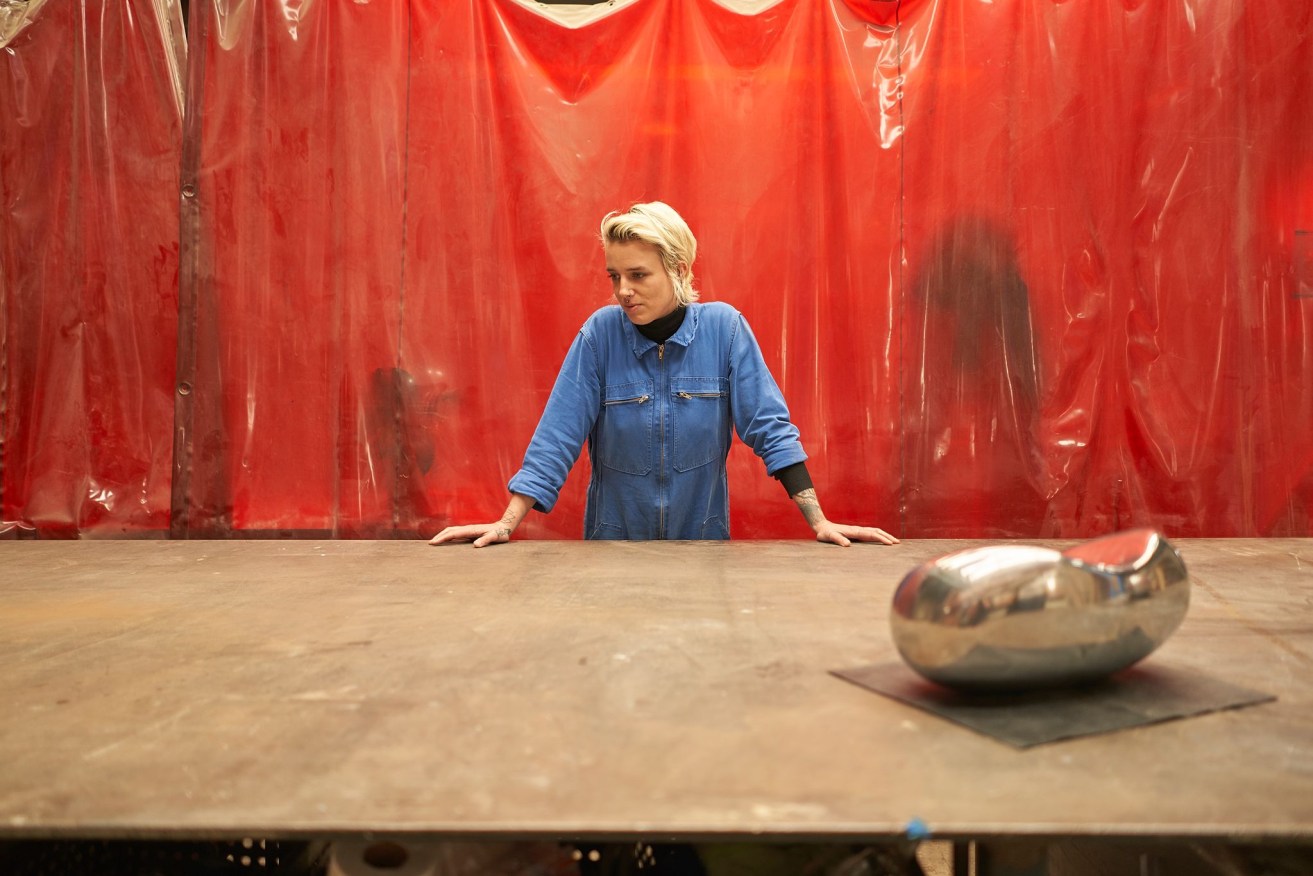How Kate Bohunnis is making and breaking the mould
The work of Ramsay Art Prize winner Kate Bohunnis reflects a “responsive relationship” with her materials formed during a residency at Thebarton’s George Street Studios.


Kate Bohunnis at George Street Studios. Photo: Sam Roberts, courtesy ACE Open.
Bohunnis had worked primarily in printmaking as an undergraduate, but during Honours at Flinders University found herself drawn to sculptural and three-dimensional forms as a way of “purposely disarming” herself via unfamiliar materials and skills.
Her current practice began to take shape in 2019, when she embarked on a six-month residency at Thebarton’s George Street Studios supported by the Helpmann Academy. Three years later, Bohunnis has never left.
“At George Street there are fabricators who have been working in the field for many, many years. They make their own work, and commissions for other artists and designers,” she explains. “It [was a case of] picking their brains when I first got here, speaking to them about what was possible and then trying to break the rules a bit, to extend it further and see how it responds.”
That push-and-pull is embodied by Bohunnis’ Ramsay Art Prize-winning piece Edges of Excess. The pendulum-inspired work, which was also created with the support of a Helpmann Academy Elevate Mentorship, sets the forces of gravity upon the contrasting hard-soft materialities of pink silicone, stainless steel and aluminium.
Working between two mentors, Martin Murray and Jason Balmer, her Elevate project focused on enhancing practical skills in metal fabrication and mould-making. The resulting prize-winning work was commissioned by ACE Open for the If the future is to be worth anything; 2020 South Australian Artist Survey.
“The interesting thing about working in metal fabrication,” she says, “is you make something as strong and as capable as possible, with the most structural integrity. But with a lot of my work, I try and take that out of the material to make it respond differently.
“Of course there’s limits, but as much as you put in, it responds back to you. I think it’s important not to compromise; there [are] many moments in the work where you could stop, and that could be enough. But metal is sort of generous in that way, you can keep going and keep pushing— it’s a responsive relationship.”
Working as a young queer woman in a traditionally masculine discipline, Bohunnis has found that not everywhere is quite as generous and supportive as George Street.
“Working in this industry, particularly coming from printmaking which is often predominantly female and non-binary people, it’s something that I’m constantly having to negotiate. As soon as I walk outside and have conversations with other people in the industry about my own work, or working as a metal fabricator for other people, there [are] complete limits.
“Essentially I become invisible, [or] I’m constantly looked at as if my body should not be capable of doing the things that it does, because it’s not a man’s body and therefore it should not be in this industry.
“It’s consistently being asked, when I present work, which man made it for me, or going into stores and asking questions and all of the answers being deferred to the person I’m there with who happens to be a man. Being told that what I want to do is impossible, or unaffordable — essentially being ‘Pretty Woman-d’ all the time,” she says with a laugh — or is it a sigh?
Now, Bohunnis is on hand for the latest arrivals at George Street to pick her brain as they learn the rules — and how to bend them.
“I would not be able to make the work if I were not here in such a space.”
The Helpmann Academy Elevate Mentorship program provides funding of up to $3000 for payment to the mentor and assists the mentee in covering any expenses associated with undertaking the mentorship.
The Helpmann Academy is now taking applications from eligible creatives for the program. To apply or for more information visit: https://www.helpmannacademy.com.au/mentorships/elevate-mentorships/
Applications close Friday, June 25.
Applications for the George Street Studios Residency will open in July 2021.




